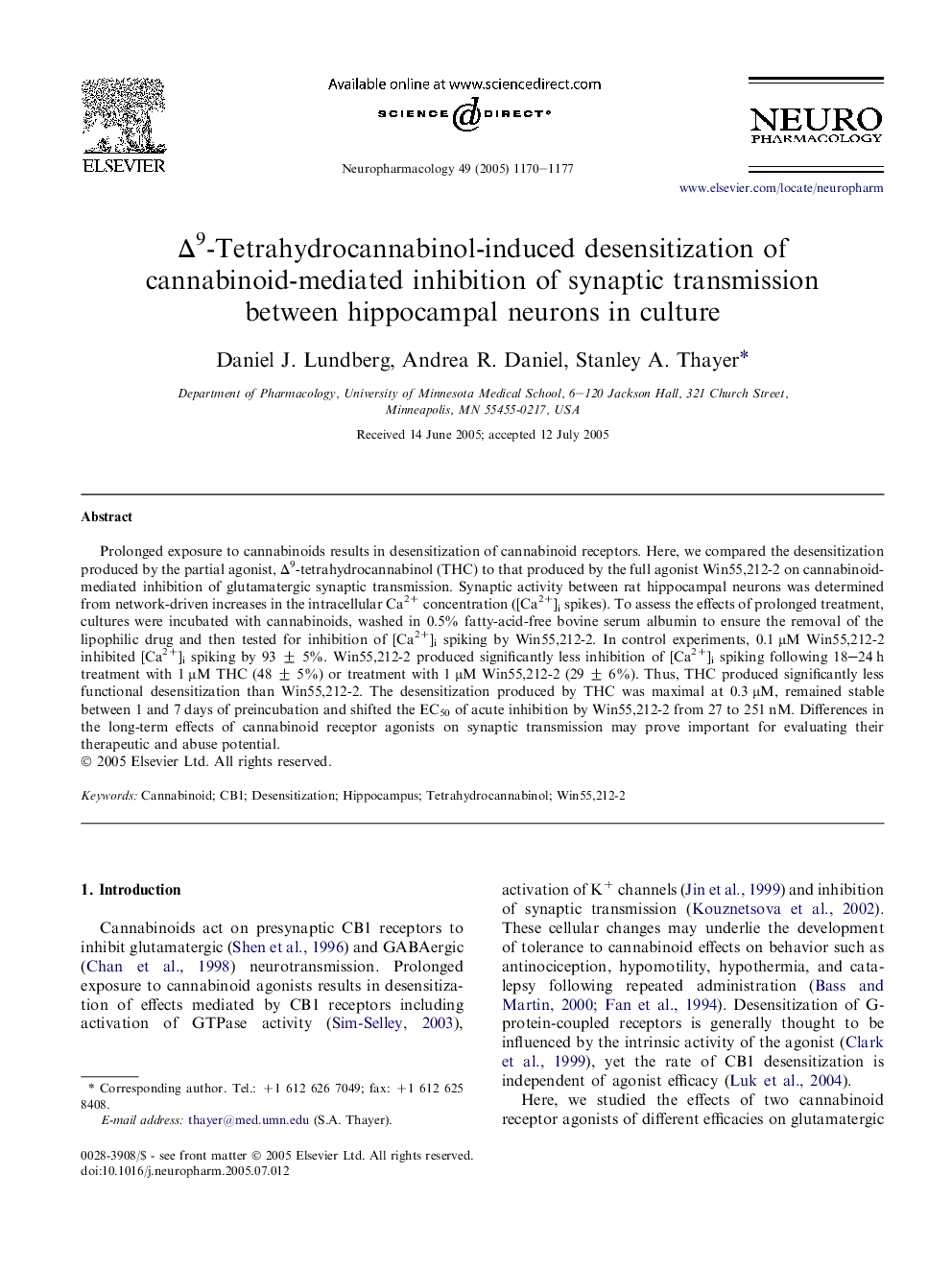| Article ID | Journal | Published Year | Pages | File Type |
|---|---|---|---|---|
| 8998188 | Neuropharmacology | 2005 | 8 Pages |
Abstract
Prolonged exposure to cannabinoids results in desensitization of cannabinoid receptors. Here, we compared the desensitization produced by the partial agonist, Î9-tetrahydrocannabinol (THC) to that produced by the full agonist Win55,212-2 on cannabinoid-mediated inhibition of glutamatergic synaptic transmission. Synaptic activity between rat hippocampal neurons was determined from network-driven increases in the intracellular Ca2+ concentration ([Ca2+]i spikes). To assess the effects of prolonged treatment, cultures were incubated with cannabinoids, washed in 0.5% fatty-acid-free bovine serum albumin to ensure the removal of the lipophilic drug and then tested for inhibition of [Ca2+]i spiking by Win55,212-2. In control experiments, 0.1 μM Win55,212-2 inhibited [Ca2+]i spiking by 93 ± 5%. Win55,212-2 produced significantly less inhibition of [Ca2+]i spiking following 18-24 h treatment with 1 μM THC (48 ± 5%) or treatment with 1 μM Win55,212-2 (29 ± 6%). Thus, THC produced significantly less functional desensitization than Win55,212-2. The desensitization produced by THC was maximal at 0.3 μM, remained stable between 1 and 7 days of preincubation and shifted the EC50 of acute inhibition by Win55,212-2 from 27 to 251 nM. Differences in the long-term effects of cannabinoid receptor agonists on synaptic transmission may prove important for evaluating their therapeutic and abuse potential.
Related Topics
Life Sciences
Neuroscience
Behavioral Neuroscience
Authors
Daniel J. Lundberg, Andrea R. Daniel, Stanley A. Thayer,
